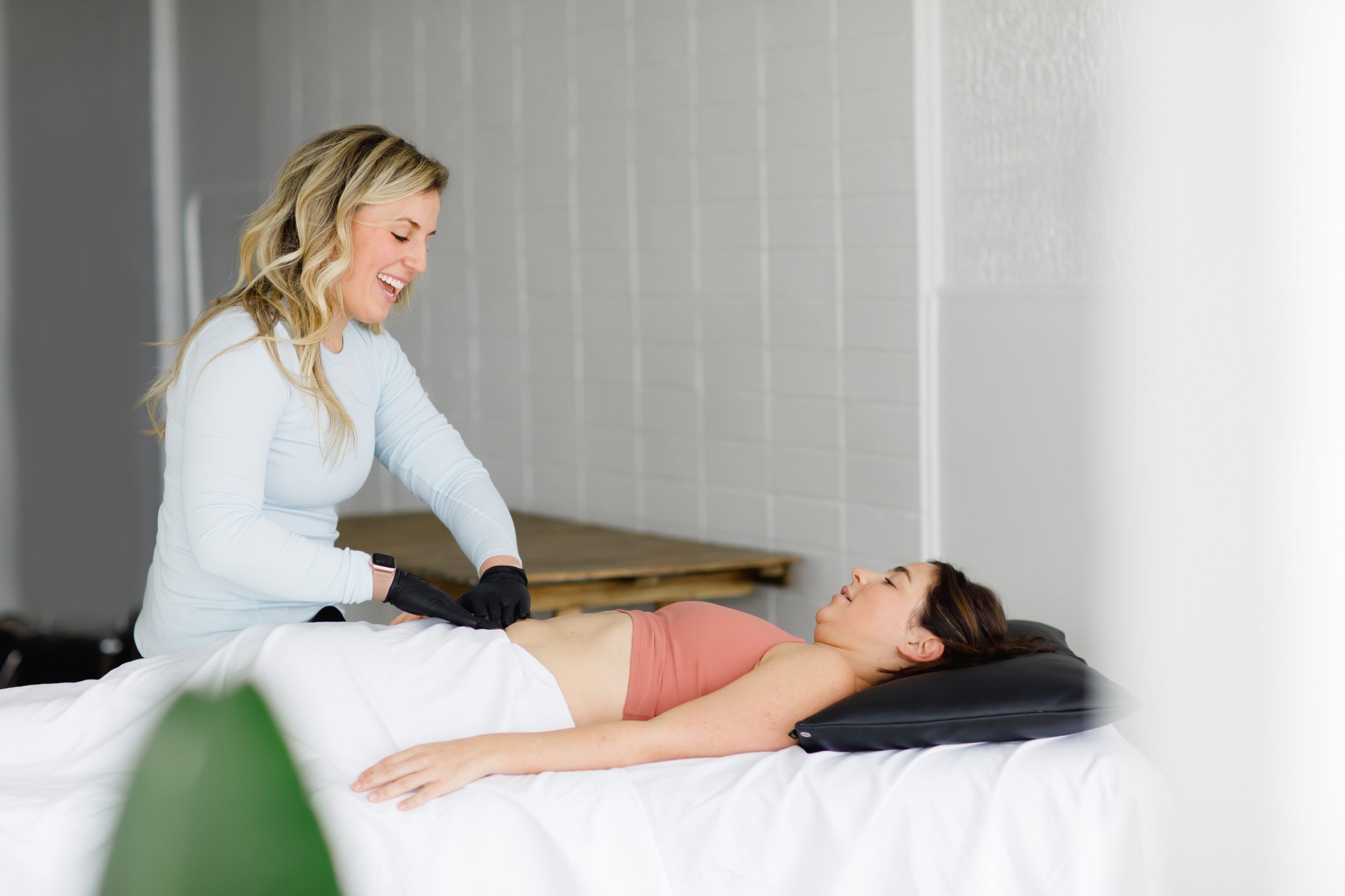The Importance of Mobilizing Your C-Section Scar
C-sections are a big part of many pregnancy journeys, yet I frequently see women who are left with little knowledge of how to care for their body after the surgery. Women are given movement restrictions for 6 weeks and that is often the only guidance. It is not uncommon to see women who have complaints of discomfort in their incision and the surrounding areas several months (or years) postpartum.
Although it depends on the doctor, a c-section incision is typically horizontal along the bikini line. Several layers of tissue are cut in order to deliver the baby and placenta. After, the uterus, abdominal cavity and skin and surrounding tissue are sutured back together. The important thing to note here is that there are several groups of tissues that are healing postpartum, not just the skin.
As your body lays down tissue to repair, it is often arranged in a disorganized matrix (think of the game “pick up sticks” as a kid). The good thing is this tissue can be influenced and rearranged to be more aligned. We want your these layers of tissue to have independent mobility and avoid adhesion to the tissues around it.
ENTER SCAR MOBILIZATION.
Through this form of soft tissue mobilization, the goal is to promote realignment of the scar tissue to prevent painful tension or adhesions to the other tissues surrounding. C-section scar massage is used for increasing localized blood flow, relieving pain, decreasing tightness, and decreasing numbness. Some women may report an increased sensitivity or nerve-like sensation instead, which the massage will help improve as well as we expose the tissues to different pressures.
It is recommended to wait to perform direct scar massage until at least 6 weeks postpartum. The scar must be healed in order to start this. You should see nice pink tissue with no scabbing or gapping in the incision. If your incision starts to gap, do not continue with the massage until it's healed. Once the scar is fully healed, you can use vitamin E oil, or your choice of massage cream, to help moisturize the scar and decreased the friction from your hands. It is also helpful to massage the scar without any oils/creams at all. That way you do have some friction to get the tissues to move, instead of slipping off. Try doing your mobilizations with and without the creams.
You can move the scar up and down, side to side, clockwise, counterclockwise, at all angles and depth. Work in the directions that you feel the most restriction. If you see puckering in the scar, focus more on that area as it may have deeper adhesions than the other portions of the scar. I teach my clients how to do a skin-rolling technique which involves lifting the skiing between your thumb and fingers then rolling along the incision mobilizing each section. Try performing massage for 5-10 minutes per day. Many women like to do it after a shower, before bed, or before a workout. Whatever time works better for you.
Take a look at the video example below on how to massage the lower abdominals and scar:
Remember - this incision goes quite deep, so your eventually your massage should be fairly deep as well. Gradually progress the depth of your pressure over time, as tolerated. The area may feel a little tender, but should not be painful. If you are really sore the next day, it can be an indication to lighten the pressure a little bit. Sometimes it may feel like an area that is “disconnected” from your body or it may feel scary to touch it. You can always start by massaging over a layer of clothing. You can also try working the area above and below the scar before moving directly on it.
You can always contact a pelvic floor PT to help you with this. Massage is a great way to try and feel reconnected to this part of your body after giving birth and it will significantly decrease the likelihood of pain in that area.

